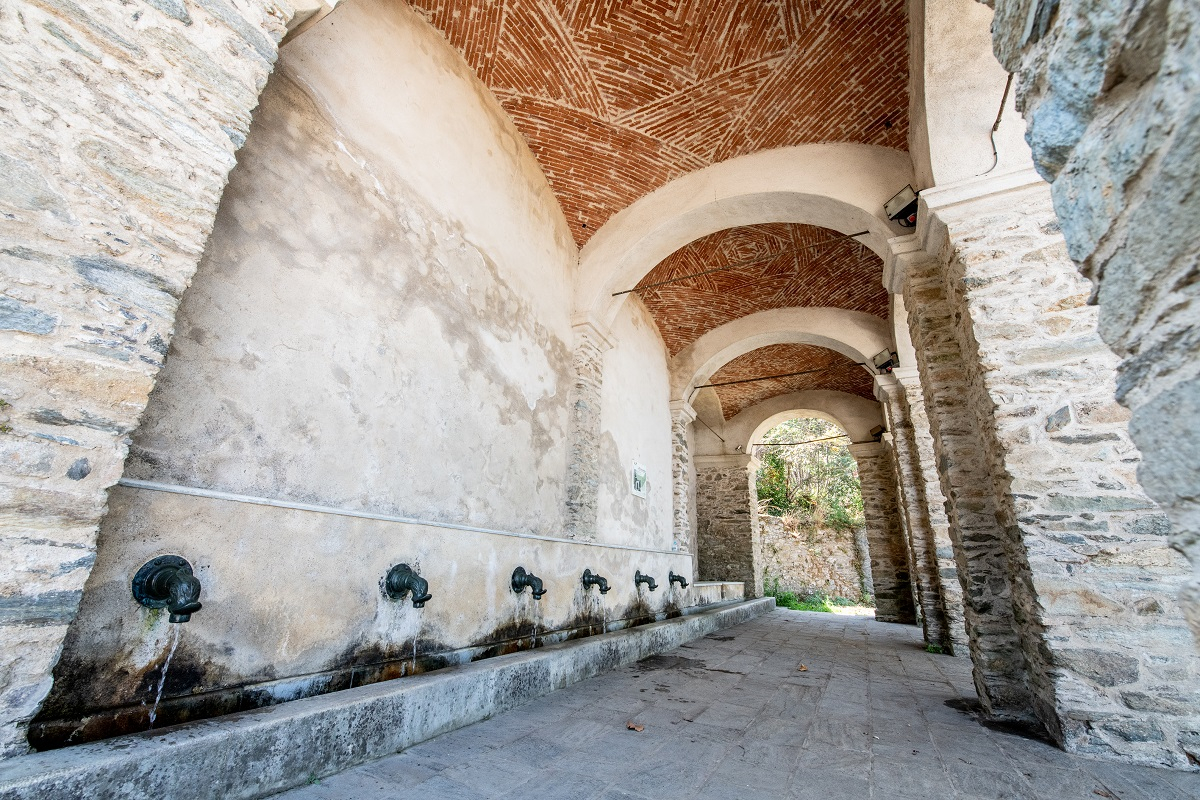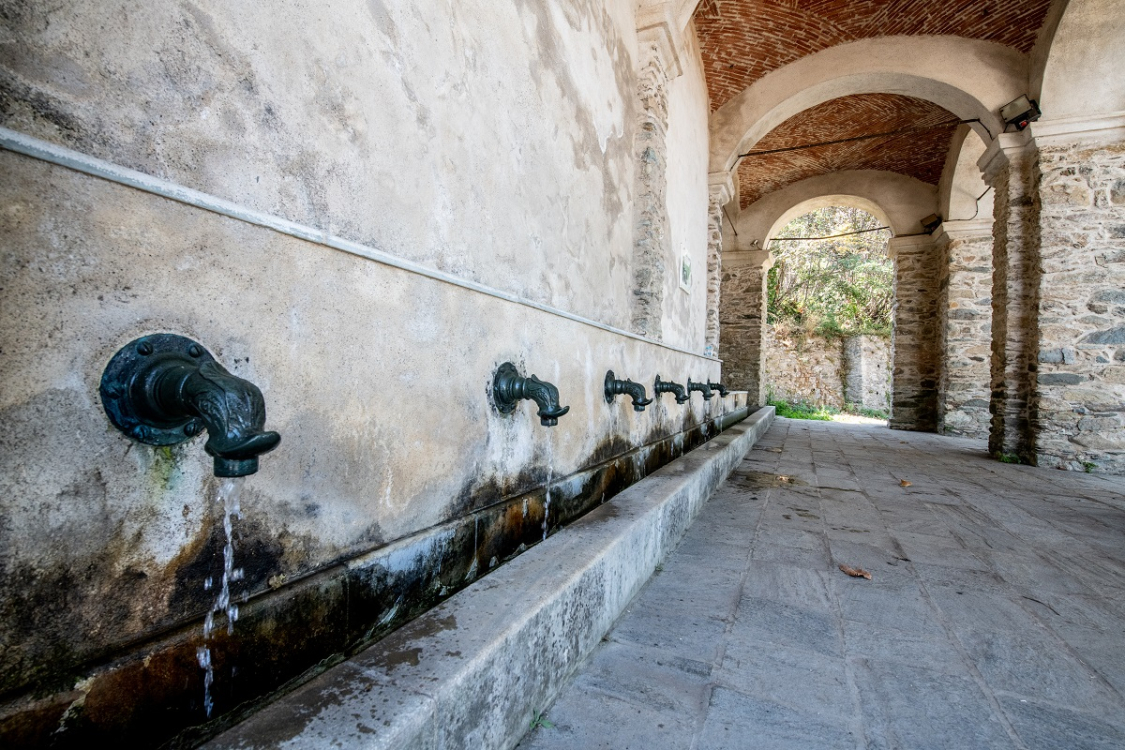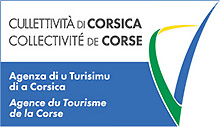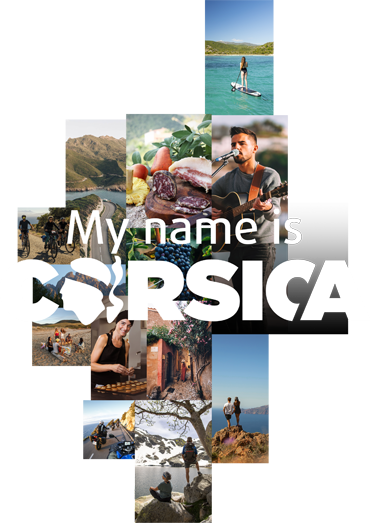Rechercher...
Explore Corsica
In Funtanona, the fountain-trough of Loreto di Casinca
Known as ‘the most imposing fountain in Corsica’
 ©Angèle Ricciardi
©Angèle Ricciardi
 ©ANGELE RICCIARDI
©ANGELE RICCIARDI
‘The most imposing fountain of Corsica’, reads a panel at the side of the monument, placed there by the Community of Communes of Casinca. On the roadside, at the entrance to the village of Loreto , the majestic Funtanona is a dominating presence.
Three arches formed from schist invite you to look inside. There, six dolphin-headed bronze water cannon-like taps spout clear, fresh water throughout the year, captured from the source underground, it is safe for drinking.
The fountain was originally built in the mid-nineteenth century to water the herds of the shepherds who had to follow the rules, which according to tradition dictated that they may only pass by very early in the morning. Today, the fountain is dedicated to the personal use of residents and passers-by.
But, because of its slightly hidden position some 200 metres from the heart of the village, it’s not well known and receives few visitors. “There is also a fountain on the square, which is better known”, says Simon-Louis Gavini, who served as mayor of Loreto-di-Casinca for twelve years. “Although it is much less monumental than in Funtanona.”
Architectural heritage
According to the sign, the continuous flow of water from these taps is “101 litres per second”. “We never understood why it was so fast” says the 82-year-old former mayor. “But thanks to this, Loreto is known in Corsica for being a true reservoir of water.” Indeed, thanks to the constant cascade, the overflow pours into the municipal stone wash house located a few metres below, and “descends through the channels, along the road, drops below Vescovato and waters the gardens” explains the great-grandson of Augustin Saliceti, one of the builders of the fountain. According to him, it was the Suzzarini family, and more precisely the lawyer Jacques-Toussaint, who repaid the communal loan which paid for the restoration of the fountain in 1876. Despite this, the fountain is still owned by the commune.
The building has been listed in the ‘Mérimée database’ since 2003. The constantly updated inventory of data of French architectural heritage monuments is managed by the Ministry of Culture.
Our Lady of Peace
Loretu-di-Casinca is one of the oldest pilgrimage sites in Corsica, where every 8 years, the feast of the Nativity of the Virgin Mary is celebrated. Within its parish is the church of Saint Andrew, and the village also houses a painting representing Our Lady of Loretu. According to tradition, it was painted by the apostle Saint Luke and is the object of great devotion, which every 50 years is carried in a procession. This year, a novena is to take place from 30 August 30 to 7 September beginning at 6 p.m., followed by the celebration of the Mass on 8 September, at 11 a.m.
 ©EMMA GUIZOT
©EMMA GUIZOT
A Tozza de roche
A Tozza is a spectacular rocky peak formed by the passing of time and the effects of nature. It appears to keep watch over the village of Loretu-di-Casinca, taking the form of the ‘head of an old man’ depending upon which angle you view it from. Formed from schist, the emblematic rock of the region hosts an iron cross mysteriously placed on its 15-metre-high peak several years ago.
 ©EMMA GUIZOT
©EMMA GUIZOT
Breath-taking panorama
At 680 metres above sea level, the belvedere of Loretu offers a view which stretches from Cap Corse to Fium'Altu and, on a clear day, from the islands of the Tuscan archipelago to the Italian coast. Although medieval in origin, the viewpoint we see today was built in 1885 by Monsieur Gavini, mayor of the village from 1885 to 1940, and clings to the slopes of Mount Sant'Anghjuli. From the platform, view the ceramic orientation table made by Jacques Orsini, a Casincais, awarded meilleur ouvrier de France status (a distinction for outstanding artisanship), several times.
 ©EMMA GUIZOT
©EMMA GUIZOT
Further information
Locate


powered by cd-media.fr



